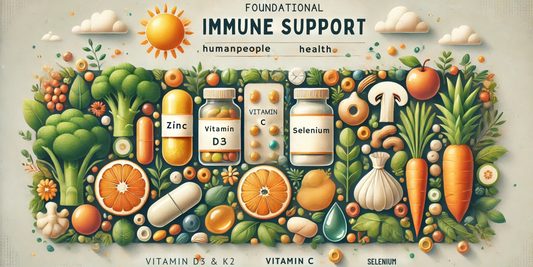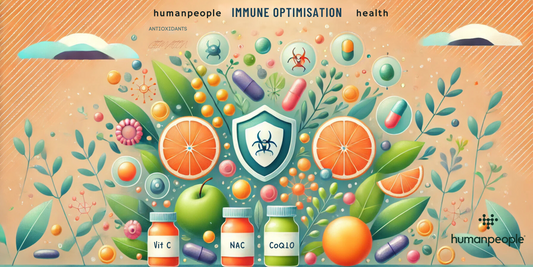It’s not possible to talk much about health these days without discussing the gut and the gut microbiome. 70% of our immune system is contained in our gut and both are home to a diverse range of micro-organisms. In fact, there is a three-way conversation going on between our gut, skin, and brain.
When things are not well in the gut then there are often related signs and symptoms on the skin. Why? This is because there is a similar immune system in the skin, which is connected to the immune system in the gut, and both immune systems interact with the outside world. A flare-up in one also seems to manifest in the other, and signposts us to the root cause of the problem.
The good news is that our new awareness of these issues allows us to tackle some baffling problems often with simple interventions, which may be little more than dietary changes.
1. Acne and diet
It’s hard to believe that in the UK there are still doctors and dermatologists who deny the link between acne and the gut, despite the 804 clinical papers on the skin-gut axis published in the last 2 years by leading scientists around the world.
Casein and whey milk proteins following pasteurisation cause an immune reaction and thickening of secretions including sebum in the skin, which can cause acne.
A study of 24,452 people published in leading journal JAMA Derm. in 2020 concluded that the consumption of milk, sugary beverages, and fatty and sugary products appeared to be associated with current acne in adults. The evidence is comprehensive.
Tips: If you are suffering from acne try a simple elimination by cutting out dairy for 4-6 weeks. After this period introduce a high amount of dairy to see if there is reaction.
2. Rosacea and gut health
Rosacea has long been recognised as having links with inflammatory bowel disease, coeliac disease, IBS, reflux, gastritis linked to h. Pylori infection and SIBO (small intestinal bacterial overgrowth).
When these conditions are treated, resolution of rosacea is often seen, therefore suggesting that there are a number of gut sub-conditions that drive inflammation that is signposted on the skin. In our clinical practice we often ask and test for SIBO in rosacea patients and find positive tests in almost 50% of cases, with a high success rate when treated.
Check for SIBO with a breath test. A simple home test can check for the presence of bacterial overgrowth..
SIBO causes abdominal distension and weight gain, check your symptoms with our quick SIBO assessment tool.
3. Eczema, dermatitis, and gut-immune balance.
 There is a growing body of evidence that links the immune reactions in both the skin and gut. An immature immune system due to a poorly diverse gut is linked to childhood eczema.
There is a growing body of evidence that links the immune reactions in both the skin and gut. An immature immune system due to a poorly diverse gut is linked to childhood eczema.
The hygiene theory suggests that underexposure to pathogens in the first 2-3 years of life leads to an underdeveloped immune system. There seems to exist a delicate balance between good hygiene and necessary exposure to pathogens to teach the immune system how to react appropriately.
Dealing with this immune over-reaction and boosting the building blocks for a healthy dermis can significantly reduce symptoms.
Tips: Build gut health, optimise fatty acids, ceramides, collagen and vitamin C all help to reduce dry skin.
4. Psoriasis and gut cross-reaction
Leading immunologist and dermatologist Alan Dattner has described the cross-reaction between fungal infection in the gut and a parasite in the sebum glands called malasezzia.
Both are similar and when candida flares up the immune system can over-react and cause skin damage, seborrhoeic dermatitias, sebo-psoriasis, and psoriasis.
Dealing with the fungal over-reaction helps the psoriasis to clear up.
How can I fix these?
Gut dysbiosis
We try to avoid antibiotics as much as possible and so use botanical antimicrobials to treat common gut issues like SIBO and other gut dysbiosis.
When the overgrowth is dealt with and the balance is restored the next stage is to then heal the gut, following the gut inflammation, to restore the integrity of the gut barrier. During this time the balance is kept in check with probiotics until our own “good bacteria” increases.
Research has shown that gut dysbiosis can be treated just as effectively as with antibiotics by using high-strength herbal antimicrobials, and without obliterating the rest of the microbiome. The downside is that the treatment period is usually twice as long (4 weeks versus 2 weeks).
Berberine, oregano oil, neem, allicin, and caprylic acid are some of the herbals that can all be used to treat bacterial and fungal overgrowth. However just because they are plant derived does not mean that they too don’t reduce overall bacteria numbers.
Gut healing
When there has been inflammation in the gut a healing process needs to occur. Amino acids found in hydrolysed collagen and L-glutamine help to heal the gut.
Deglycyrrhizinated licorice (“DGL”) will help to build up healthy mucus in the gut and in doing so helps to treat acid reflux symptoms as well as heal the gut.
Zinc, curucimin, and quercetin all help to repair and reduce inflammation and are used in our gut repair programme. Essential fatty acids omega 3 and GLA are also important.
Dietary changes
So, what are some of the easy fixes? Well once unwanted micro-organisms are dealt with, the aim is to restore the diet properly. If you are still reacting to foods then there is probably still some gut inflammation.
A high fibre diet helps to keep the microbiome healthy.
Good gut foods and bad gut foods
The balance of good bacteria in our gut depends on what food or prebiotics are supplied to the large intestine.
By the time food has reached the large intestine it has already been digested by our own enzymes in the mouth, stomach and small intestine.
The remnants left over is usually fibre that we are not good at breaking down. Bacteria in the gut will metabolise/ ferment this hard to break down material producing by-products or postbiotics.
1. Prebiotics
To encourarge the good gut bacteria or probiotics to flourish eat a wide range of fibre.
The top prebiotic foods are: asparagus, artichokes, onions, leeks garlic jerusalem artichokes and green bananas. Increasing fibre levels quickly can cause discomfort so do this over a number of weeks to avoid bloating.
Not to be confused with fermented foods that are full of postbiotics. Fermented foods contain fibre that has already been broken by bacteria.
The wider the range of vegetables and fruit eaten the more diverse the gut which is associated with health.
Bad gut foods
Yeast and candida thrive on sugars. Sugar or beige carbs are the fuel for yeast and contain little or no fibre.
High sugar content is linked to inflammation. When yeast infections take hold they can be difficult to control.
Tip: If you get a lot of bloating when you eat high fibre foods then fermentation may be occurring in the small intestine due to overgrowth in bacteria. You may be suffering from small intestinal bacterial overgrowth (“SIBO”) which is also associated with bloating, constipation, and both weight loss and weight gain.
2. Probiotics
Numerous different types of strains of probiotics have been studied and shown to have different effects.
For example, here at humanpeople we have been researching different strains that have been shown to be beneficial for reducing inflammation in acne and rosacea and some have anti-ageing effects. Bifidobacteria and lactobacillus are amongst the most beneficial.
Other strains can help to stop the overgrowth of yeast.
Tip: Did you know that the UK is one of the few countries in Europe not to prescribe the probiotic saccrhomyces boulardii along with antibiotics. It has been shown to reduce antibiotic induced diarrhoea and prevent candida overgrowth.
3. Postbiotics
Postbiotics are the by-products produced by bacteria and micro-organisms in the gut. The body, and particularly the colonocytes that line the gut, rely on postbiotics as an important energy source.
These postbiotics come in the form of short chain fatty acids and one of the most studied is butyrate. It can make up to 30% of the total energy of the body.
Tips: Fermented foods often contain high levels of postbiotics. They are also often high in histamines so if you are sensitive to histamine you may need to avoid.
References
The Skin Microbiome: A New Actor in Inflammatory Acne. 2020
The gut microbiome alterations in allergic and inflammatory skin diseases – an update 2020
Comparative Analysis of the Microbiome across the Gut-Skin Axis in Atopic Dermatitis. 2021
Rosacea and the gastrointestinal system. 2020
Rosacea and the Microbiome: A Systematic Review. 2021
Etiopathogenesis of rosacea: a prospective study with a three-year follow-up. 2016
Small intestinal bacterial overgrowth in rosacea: clinical effectiveness of its eradication. 2008
Rosacea, Germs, and Bowels: A Review on Gastrointestinal Comorbidities and Gut-Skin Axis of Rosacea.2018
The microbiome and atopic eczema: More than skin deep. 2017
Variations in early gut microbiome are associated with childhood eczema.2019
The gut microbiome in psoriasis and psoriatic arthritis. 2020
Gut Microbiome in Psoriasis: An Updated Review. 2020










